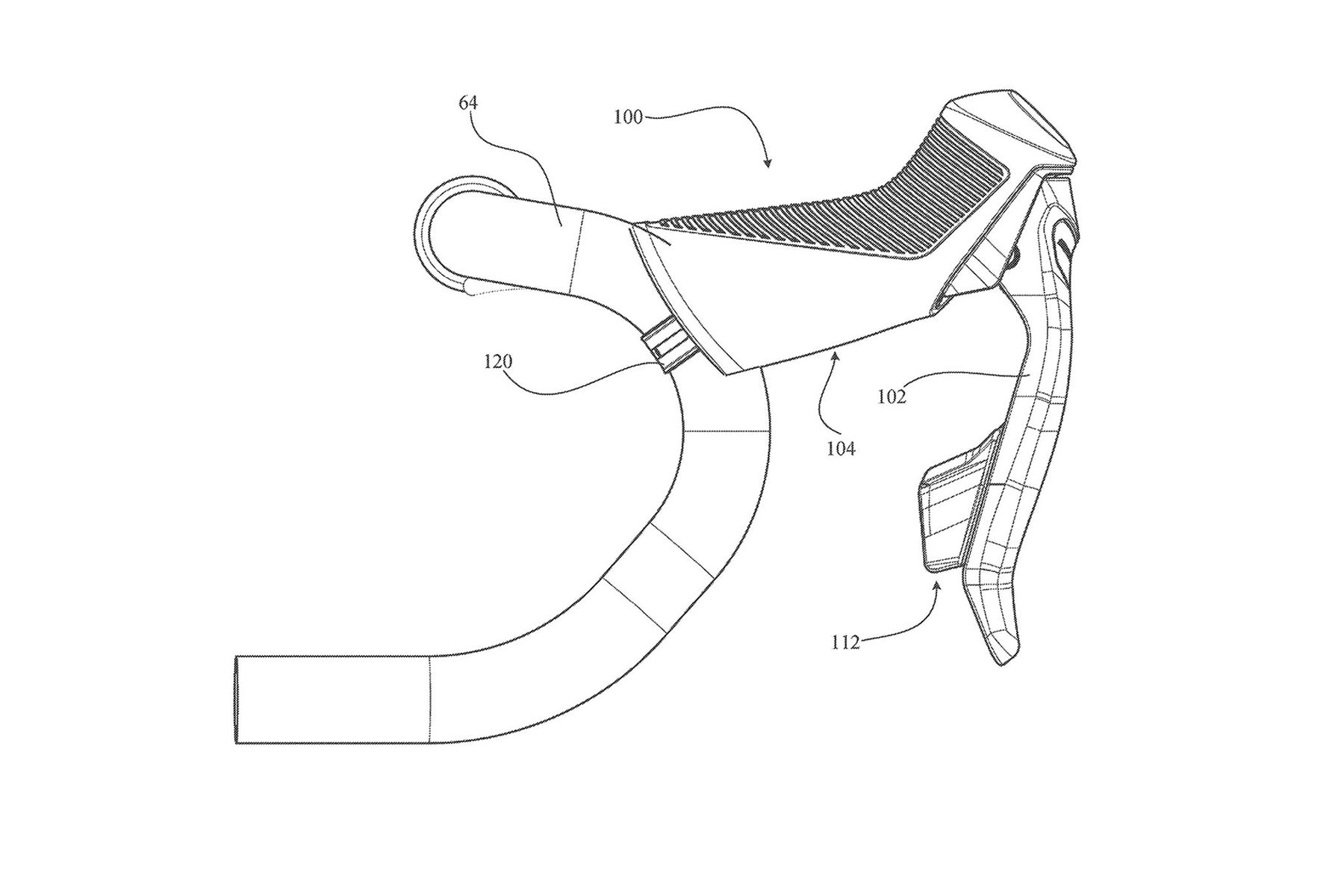
Artikel
08
november
New SRAM Patent Reveals Possible 3rd Generation Red AXS Lever
A recent patent from SRAM (published August 19th, 2023), reveals an all-new brake and electronic shifter design that could be intended as the next generation SRAM Red eTap. The drawings depict a housing that is considerably longer than that of the current generation Rival, Force, and Apex AXS levers. A closer look reveals why.
The proposed lever design utilizes a new (to SRAM) layout of the braking mechanics, with a high-pivot lever design that is said to deliver an improved mechanical advantage. Also new (again, to SRAM) is a larger brake fluid reservoir inside the housing, tool-free adjustment of bite point, and the inclusion of a programmable button on the inboard face of the hood.
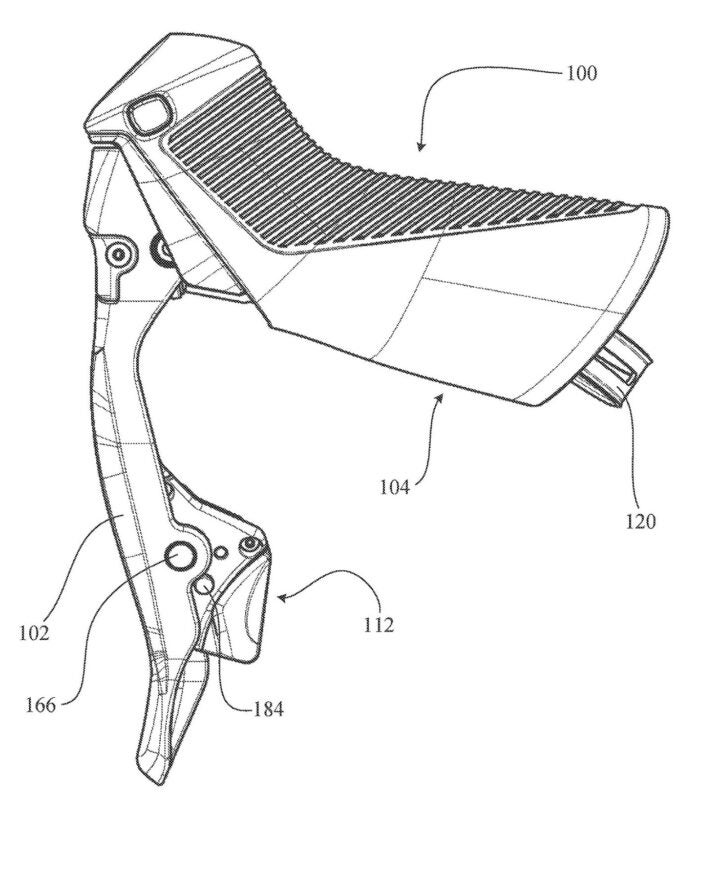
Next Generation SRAM AXS Drop Bar Lever
Before we dig into the internals, let’s just take a moment to appreciate the shape of the proposed lever. A side view reveals that the housing is comparatively long. So, dependent on the mounting arrangement, it could have implications for rider position.
The hood itself – the area where you place your palms the most while riding – looks extended in comparison to current SRAM drop bar levers, be it current SRAM Red or the current, svelte Force, Rival, and Apex-level AXS shifters. Otherwise, the lever itself doesn’t seem as bulbous or wide as current SRAM Red eTap AXS levers, comparing favorably in regard to width to the latest crop of SRAM AXS levers.
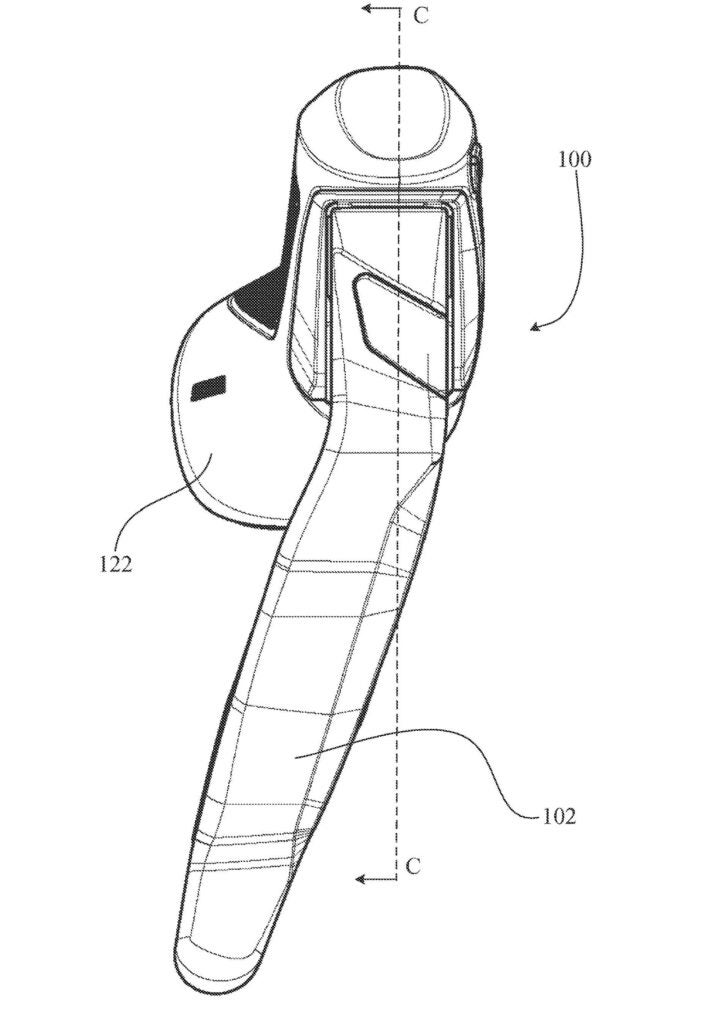
Then, looking at the lever head-on, we see that the lever blade itself actually flares outboard at a more aggressive angle – more akin to the lever blade angle on Shimano GRX Di2 offerings. That could help the lever work better for riders who prefer a bar with a more aggressive flare on the drops.
Further, the brake lever blade pivot point itself looks to be quite a bit higher than any current or previous SRAM drop bar levers. This again seems to pull a page out of the Shimano GRX Di2 lever’s book. Shimano says they do it for increased leverage for riders, and we suspect the same has occurred here.
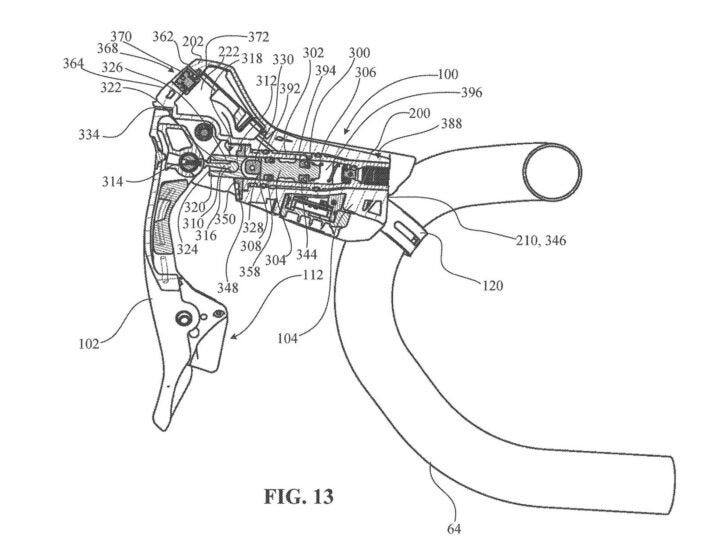
New Braking Mechanics
The patent largely focuses on the lever’s internals, specifically how pulling on the lever translates to hydraulic fluid displacement, and thus braking. While current SRAM Red, Force, Rival, and Apex levers rely upon a pull-rod to move the piston through the master cylinder, the lever proposed in this latest patent depicts a push-rod system, more akin to what we see on Shimano’s offerings.
In this arrangement, the braking lever pivot sits high on the housing. Pulling it pushes the main piston through the master cylinder sleeve to displace the non-compressible braking fluid through the line and into the brake caliper. In contrast to current designs from SRAM, the master cylinder is positioned horizontally, such that it is parallel to the ground when the lever is mounted to the bar.
The new configuration appears to leave additional space above the lever and its pivot. The patent inventors propose to fill that space with additional fluid volume for the reservoir (222, Fig. 13 above). “To provide more hydraulic reservoir fluid volume, a pocket may be added into a lever blade opening for additional fluid for compensation. The pocket may fit between ears of a lever blade and wrap around a lever pivot axle“.
Extra volume could make the brake’s performance less vulnerable to the presence of air in the system, requiring less frequent bleeds.
The main advantages, however, appear to be related to the improved leverage provided by the lever’s pivot position. The document reads, “This location of the pivot axis P allows for a greater mechanical advantage for building pressure and also provides a more subtle sweep of an end of an end of the push rod, mitigating bore, piston, and seal wear that may occur from side-load of a piston within a bore”.
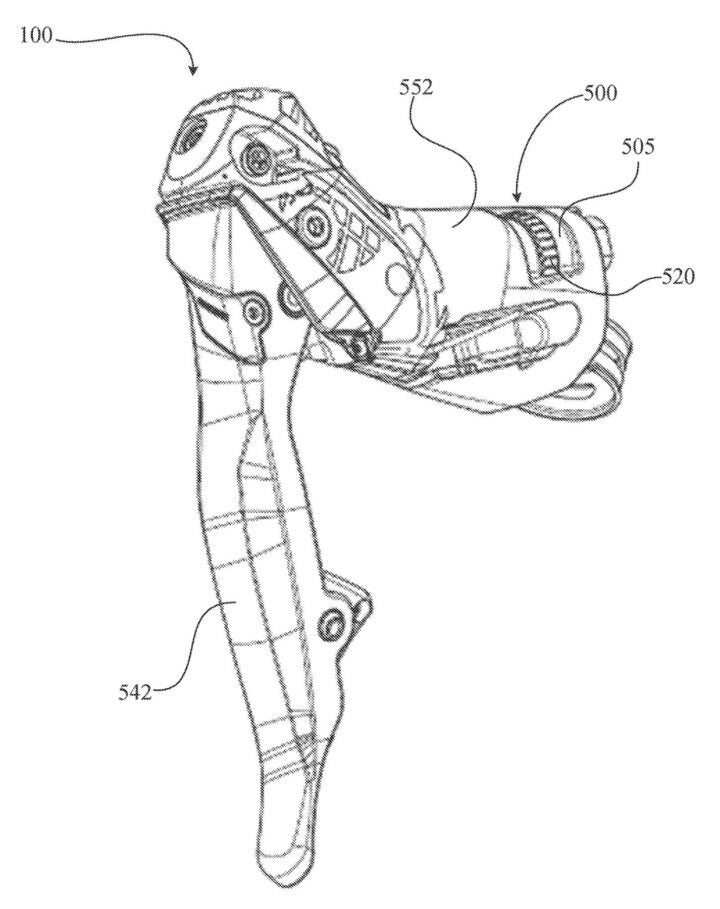
Tool-Free Bite Point Adjustment
Instead of requiring a hex key to alter the brake’s bite (or contact) point, the proposed design outlined in this patent shows a tool-free adjustment mechanism. Those familiar with SRAM’s line of mountain bike brakes (specifically SRAM Code RSC levers), will recognize the cam adjustment (500) on the upper face of the lever housing.
On the Code RSC brakes, this mechanism is rather vulnerable to the elements. It tends to seize up when grit gets rolled into the mechanism, making it unusable. On the drop bar lever seen here, however, the adjuster is tucked away underneath the hood cover. In contrast to current designs, it is positioned more toward the rear of the housing. The document reads, “the adjustment mechanism may provide infinite adjustment between zero and 1.5 mm“.
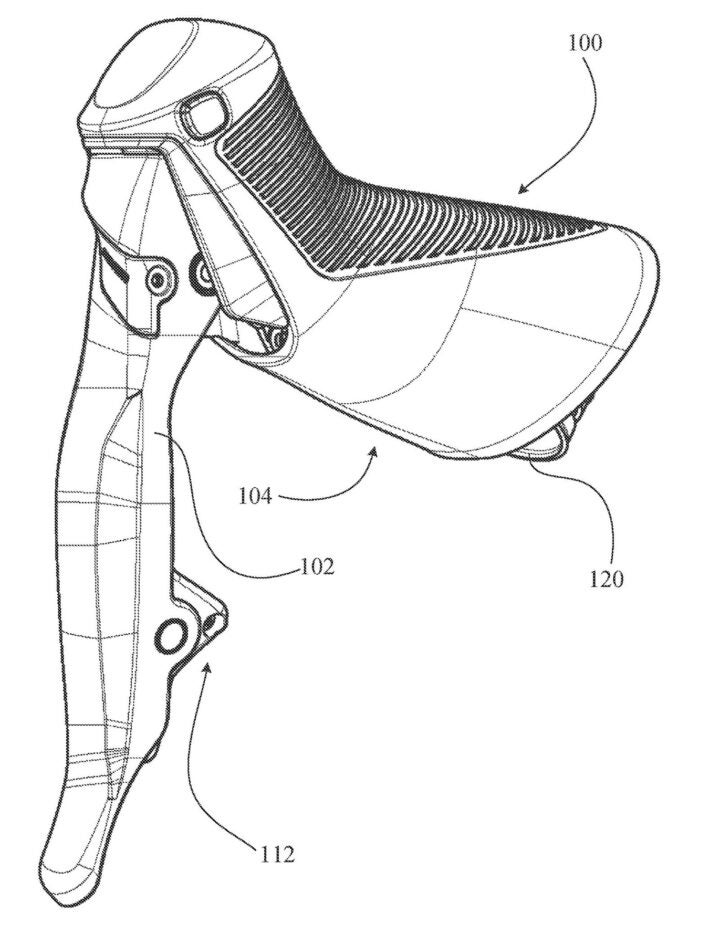
An Extra AXS Button
The new lever is also home to a new button placed on the inboard face of the hood, where it is presumably easily pushed by the rider’s thumb. Throughout the patent, this button is referred to as the auxiliary button. The inventors write, “activation of the auxiliary button unit may initiate the generation of signals related to shifting, pairing, derailleur trim operations, power management, one or more other actions on the bicycle, or any combination thereof”.
We take that to mean the button could be programmable by the rider to perform whichever of those aforementioned functions. In the context of a regular bike, it could offer up a second position from which to actuate an up- or down-shift. In the context of an eBike, it could be used to switch between assist modes.
Again, this seems similar in capability to Shimano GRX Di2 levers. Those levers place an auxiliary button on the inner side of the hood, just above the brake lever blade pivots. Shimano allows the two buttons (one atop each lever) to be programmed to actuate a shift, scroll through a Garmin cycling computer, and more. They’re handy buttons to have and ones that SRAM fans have surely asked for on new levers.
We’ve reached out to SRAM to find out if and when such a design will make it to market, and whether or not it is destined to be a part of the 3rd generation SRAM Red AXS group.
What's your reaction ?
Follow us on Social Media
Recent posts

July 27, 2024
Nieuwe kabinetsvisie: samen sterker tegen cyberdreigingen

July 24, 2024
Navigating AI Implementation: Try these strategies to overcome resistance.

July 24, 2024
Sick Leave Policy Netherlands Guidance for HR and Entrepreneur.

July 24, 2024
CSRD Reporting: Mandatory Reporting on Corporate Sustainability.

July 24, 2024
Training Budget: Investing in Employee Development.

 Inloggen
Inloggen
 Registreren
Registreren






Comments (0)
No reviews found
Add Comment